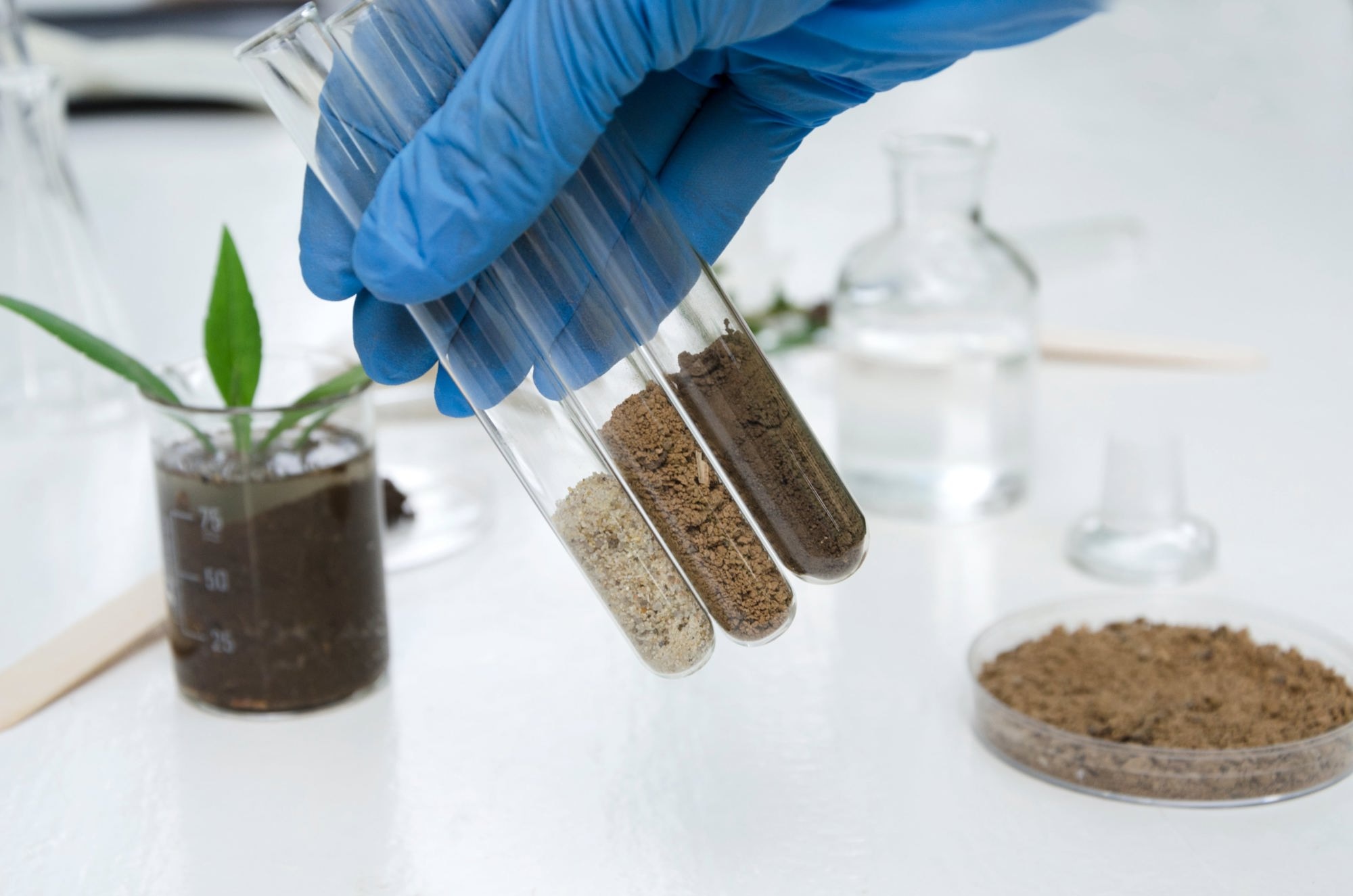The fundamental components of the geologic structure are soil and sediments. Categorizing based on grain size and shape is an important stage in soil analysis in hydrology, sedimentology, and geology. It is also important for environmental monitoring, agricultural development, mining resources, civil engineering, and other fields.

Image Credit: Bettersize Instruments Ltd.
This article will discuss what approach can measure soils and sediments with a wide particle size distribution and how soil particle shape parameters are effectively and simply obtained.
A Better Solution
Bettersizer S3 Plus integrates laser diffraction (LD) and dynamic image analysis (DIA) in one instrument to measure particle size and shape at the same time, as well as provide different sizes and morphological parameters, enabling an in-depth understanding of soils and sediments.

Image Credit: Bettersize Instruments Ltd.
Measuring Soils and Sediments from Nanometer to Millimeter
Natural soils and sediments typically have very broad particle size distributions, which increases the chance of coarse-end or fine-end information loss when measuring particle size with only one method due to the measurement range constraint.
The Bettersizer S3 Plus fully utilizes the merits of laser diffraction for fine particles and dynamic image analysis for coarse particles, providing customers with a consistent particle size distribution to the coarse end of soils and sediments without information loss.

Figure 1. Optical System of the Bettersizer S3 Plus. Image Credit: Bettersize Instruments Ltd.

Figure 2. Particle size distribution of the lunar regolith simulants with wide particle size distribution. Image Credit: Bettersize Instruments Ltd.
Providing Multiple Shape Parameters for Soil Analysis
Particle shape analysis is desired by researchers in many areas since the shape features of soils and sediments result from various environmental conditions and indicate the diverse physical qualities of these materials.
The Bettersizer S3 Plus can automatically estimate tens of thousands of particles in a matter of minutes and provides many particle shape parameters via dynamic image analysis, allowing users to gain a comprehensive understanding of their soil samples.
Shape parameters
- L/D
- Ellipse ratio
- Aspect ratio
- Circularity
- Solidity
- Convexity
- Compactness

Figure 3. The images of sand. Image Credit: Bettersize Instruments Ltd.

Figure 4. Circularity distribution of sand. Image Credit: Bettersize Instruments Ltd.
Enabling Effective Dispersion of Coarse Samples
The coarse particles are heavy and difficult to disperse and deliver to the detecting region due to the high density of soil particles, potentially resulting in a low representation of the findings.
BT-803—A patented wet dispersion unit featuring:
- Adjustable stirring speed: 0~2500 rpm
- A 50 W built-in ultrasonic disperser

Image Credit: Bettersize Instruments Ltd.
The hydromechanical layout of the BT-803 provides sample homogeneity during circulation, which is particularly important in solving the delivery and sinking problem of coarse particles.
Table 1. The particle size comparison of the same coarse sample that was dispersed with the blades installed at different positions. By optimizing the blade position, the coarse particles can be effectively detected. Source: Bettersize Instruments Ltd.

| Blade Position |
D10 ( μm) |
D50 ( μm) |
D90 ( μm) |
| Position 1 |
91 |
320 |
608 |
| Position 2 |
144 |
366 |
661 |
| Position 3 |
192 |
403 |
710 |
| Position 4 |
122 |
340 |
631 |

Figure 5. The particle size repeatability of coarse sediments. BT-803 can enable excellent repeatability of the measurement of coarse samples. Image Credit: Bettersize Instruments Ltd.
Specialized Standard Samples for Soil Analysis
Common standard samples for quantifying laser diffraction analyzers, such as PS latex and glass beads, have a narrow particle size distribution, smaller density, and weaker particle interaction forces. Because of the vast disparities between these standard samples and soils, they are unsuitable for soil analysis.
Bettersize created a series of specific standard samples based on the qualities of soils and sediments to provide customers with a trustworthy verification solution to assure the accuracy of the measurement and representativeness.

Figure 6. The particle size distributions of specialized standard samples. Image Credit: Bettersize Instruments Ltd.
Literature List
- Size, morphology, and composition of lunar samples returned by Chang’e-5 mission
- Late quaternary episodes of clastic sediment deposition in the tarimba cave, central Brazil
- Research by: Qian Xuesen Laboratory of Space Technology, China Academy of Space Technology Journal: Science China Physics, Mechanics & Astronomy
- Research by: Institution of Geoscience, University of Brasillia Journal: Quaternary International
- Estimating sedimentation rates in small reservoirs – suitable approached for local municipalities in central Europe
- A novel auger-based system for extraterrestrial in-situ water resource extraction
- Research by: Department of Geography, Faculty of Science, Masaryk University Journal: Journal of Environmental Management
- Research by: Qian Xuesen Laboratory of Space Technology, China Academy of Space Technology Journal: Icarus
- Modelling settling-driven gravitational instabilities at the base of volcanic clouds using the lattice Boltzmann method
- Effect of hyaloclastite breccia boulders on meso-scale periglacialaeolian landsystem in semi-arid antarctic environment, James Ross island, antarctic peninsula
- Research by: Department of Earth Sciences, University of Geneva Journal: Frontiers in Earth Science
- Research by: Department of Geography, Masaryk University Journal: Geographical Research Letters
- The modelling of soil water erosion in the context of hydrological processes in small catchments
- Study on the application of laser particle analysis in the test of geotechnical particle analysis
- Research by: Department of Geography, Faculty of Science, Masaryk University
- Research by: Department of Geography, Masaryk University Journal: Materials Science and Engineering

This information has been sourced, reviewed and adapted from materials provided by Bettersize Instruments Ltd.
For more information on this source, please visit Bettersize Instruments Ltd.
